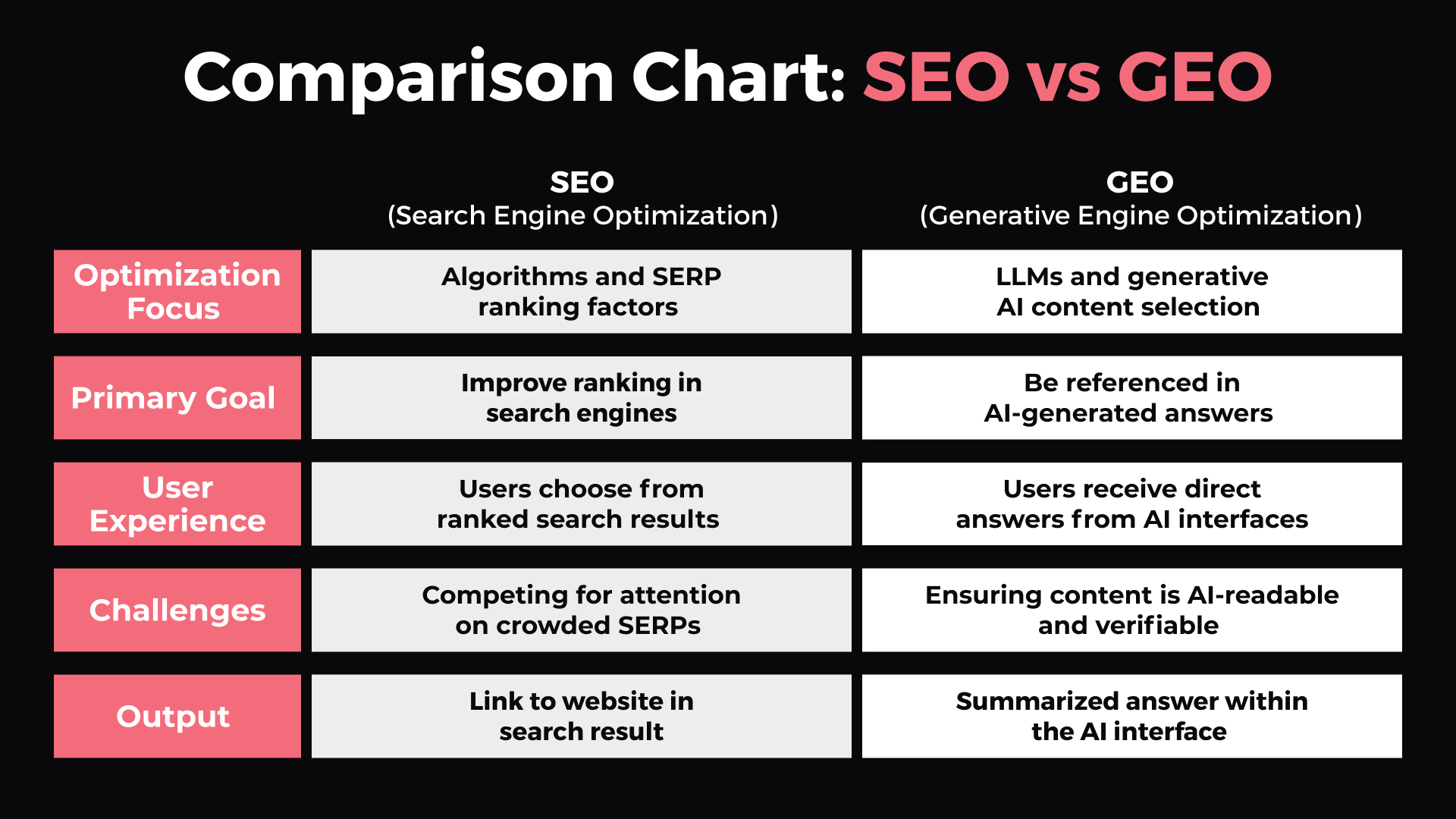When it comes to getting discovered online, it’s no longer just about search engine rankings. It’s about being the answer – not just to search engines, but to AI-driven queries as well. Welcome to the new frontier: GEO, or Generative Engine Optimization.
What Is GEO and How Is It Different from SEO?
Search Engine Optimization (SEO) is the long-established practice of enhancing your website to improve visibility in search engine results pages (SERPs). It involves strategic keyword usage, quality content, backlink building, technical improvements, and more – all aimed at pleasing algorithms like Google’s or Bing’s.
Generative Engine Optimization (GEO), on the other hand, is about making your content AI-friendly. Instead of optimizing for ranked lists, GEO is designed to make your content usable by large language models (LLMs) like ChatGPT or Google’s Gemini. The goal is to have your content referenced directly in AI-generated responses.
Traditional SEO: The Foundation of Visibility
SEO is built around matching user search intent with valuable content. Techniques include:
- Keyword optimization
- Content quality and relevance
- Mobile usability and speed
- Internal linking and crawlability
- Authority through backlinks
The objective? To appear on page one – preferably at the top – so users click through to your site.
GEO: The Future of Content Optimization
Unlike SEO, GEO doesn’t focus on rankings. Instead, it emphasizes:
- Clarity and depth of content
- Answer-focused structuring
- Use of statistics, citations, and industry-specific terms
- Intent-based writing, whether informational, navigational, or transactional
The goal here is to provide content that AI can easily understand, extract, and rephrase into helpful, conversational answers.
Comparison Chart: SEO vs GEO

Why Helpful, Targeted Content Matters More Than Ever
With Google’s AI Overviews and ChatGPT’s real-time browsing capabilities, traditional content optimization is evolving. Modern algorithms – and AI models – now look beyond keywords. They analyze the semantic meaning of content and evaluate how well it answers real-world questions.
GEO thrives in this space. It encourages creators to:
- Focus on specific questions or problems
- Provide concise, high-value content
- Use domain-specific language, data, and citations
By doing so, you’re not just hoping to be seen – you’re positioning your content to be used and trusted by AI systems.
How to Optimize for GEO and AI Discovery
Here are actionable strategies to boost your content’s potential for being selected in generative responses:
Content Creation
- Research what questions your target audience is asking to understand the most important topics to address
- Include clear summaries or key takeaways at the top
- Use structured content: headers, bullet points, and short paragraphs
- Answer specific questions clearly and directly
Pro Tip: Start by auditing your existing content for AI-readiness. Ask yourself, “Would this answer be helpful if read aloud by an AI assistant?”
Content Enhancement
- Cite reliable sources and include statistics
- Incorporate industry-specific terms and authoritative tone
- Address various search intents: informational, navigational, transactional
Technical & Distribution Strategies
- Use structured data markup (e.g., FAQ schema)
- Reindex updated content via Google Search Console
- Distribute on platforms like Reddit, Quora, and social media
- Use multimedia formats like infographics or videos
Final Thought: It’s Not SEO Versus GEO – It’s SEO Plus GEO
Think of SEO as the way to be found. Think of GEO as the way to be chosen. They are not opposing tactics — they are complementary strategies. When used together, they allow your content to perform in both search results and AI-generated conversations.
So don’t choose between them. Master both.
The Latest
We study the game as hard as we play it.
Learn with us what’s now and next.
